10 minutes
Now is a great time to recalibrate and focus on shifting your leadership style from reactive to back to proactive.
Many of us look forward to a fresh start at the beginning of a new year. The past two years have been chaotic, stressful and challenging for most of us, and credit union leaders have not only had to manage employees, but manage the myriad changes caused by the pandemic. Perhaps over the past two years, you have felt more reactive than proactive as a leader. Now is a great time to recalibrate and focus on elevating your leadership.
Starting the year with a plan for your leadership growth will ensure that you are more purposeful throughout the year. This checklist is designed to support your leadership and your team throughout the year so you can retain your best employees, facilitate results and ignite ownership in your team. The checklist isn’t meant to be all-encompassing, but rather, provide you with a framework for focusing on exceptional leadership. Leadership is action—the daily, meaningful interactions are most important for impacting your employees and your team in a positive way.
Below is a checklist of actions you can take to be a purposeful, effective and exceptional leader in 2022:
Create clarity.
The beginning of the year is a great time to set your team up for success. One of the most important elements of success is clarity around what you are aiming to achieve. Take half a day to create a one-page roadmap for you and your team based on your credit union’s strategic plan. Provide clear weekly, monthly, quarterly and annual goals for your team. This road map should drive your team meetings and individual coaching sessions throughout the year.
Hold kickoff meetings.
Once you have clarity, hold team and individual kickoff meetings. The purpose of the team meeting is to create clarity for your employees around those goals and get the team excited for the year ahead. Individual kickoff meetings can be a combination of discussing goals and understanding each employee’s personal and professional goals for the year. Involve your employees in the process, and take an interest in their career goals and development. Develop a one-page plan with your employee that includes individual goals and development goals. (For example, if an employee wants to become a leader one day, one goal may be to enroll and complete a leadership program.)
Schedule recurring coaching sessions on your calendar.
Most leaders I know struggle to regularly coach their employees because they try to fit coaching in among all their other meetings and responsibilities throughout the year. While on-the-spot coaching can be effective, regular coaching sessions are necessary to create a relationship with and develop your team members. Purposeful leaders schedule recurring bi-weekly or monthly coaching sessions in the beginning of the year and make these meetings a priority.
Schedule strategic thinking time.
Do you struggle to find time to do your actual work because you are constantly running from meeting to meeting? As a leader, you must be purposeful about creating strategic thinking time in your schedule for you and your team. This is a key result area of every leader’s job, and the only person who can create that time in your calendar is you. Schedule two hours each week for personal strategic thinking time, and at least a half day a month. Make sure that at least one of your team meetings each month is focused completely on strategic topics.
Provide meaningful feedback.
This should be ongoing, and one of the best ways to ensure your employees know where they stand is to provide feedback in each of their coaching sessions. There is no need to schedule separate meetings (unless you need to have an urgent discussion). Providing positive and constructive feedback coaching sessions is a great way to get employees used to fluid, consistent feedback. It’s not an event; it becomes part of your regular interactions.
Ask more questions.
Questions are an excellent tool for coaching employees to higher level performance, solving problems and developing critical thinking skills. As a leader, your role is to facilitate results, not fix problems. When an employee comes to you with an issue, ask them a question. For example, “What do you think?”, “What options have you thought of?” or “What are your reflections about this issue?” Asking questions is a great way to deepen your employees’ critical thinking skills and increase their confidence. It also facilitates employees finding their own solutions rather than constantly relying on their manager. Your employees are capable, smart professionals. As a leader, you can help facilitate their best performance by guiding them with questions.
Check in on progress.
Use coaching sessions to measure progress on goals and coach employees to improved performance, if necessary. Building progress checks into coaching sessions ensures there is a consistent focus on results. Halfway through the year, ask your employee to type up their progress for the one-page plan you developed together in the beginning of the year. Use this time to coach around any obstacles, acknowledge accomplishments and make any updates.
Host a team retreat.
Four to six months into the year is a great time to hold a team retreat. If you are a director or a department manager, a one-day retreat is a great way to reconnect the team personally as well as check in on goals and recalibrate, as needed. This past year, several of my clients held their team retreats virtually. They had social time built in and a block of time focused on goal progress and strategic discussions.
Recognize and appreciate.
This should also be ongoing—recognize effort and show genuine appreciation to your employees. One of the top reasons employees quit their jobs is a lack of appreciation. (Another top reason is a bad boss.) Whether it’s a handwritten thank you note, an email, text or phone call, or a small gift, rewarding excellent performance is part of your job as a leader. To find out how your employees prefer to be recognized, read the book, The 5 Language of Appreciation in the Workplace and have your each of your employees take the survey.
Create connection.
This should be an ongoing focus throughout the year—make sure your individual and team meetings incorporate social time and ways to create connections among the team. Starting team meetings off with a simple exercise is a great way to stay connected. (One of my favorites is “High/Low/Grateful.” Each team member shares a high from the past week, a low from the past week, and one thing they are grateful for.) As a leader, take an interest in your employees by asking about their families, checking in on them (especially if they work virtually), scheduling a lunch to catch up, and acknowledging events like birthdays, anniversaries and family events.
Conduct “stay interviews.”
Unlike exit interviews, where an employee who is leaving is asked a series of questions about their employment experience, a stay interview is proactive by asking these questions before an employee decides to leave. As a manager, it’s important to understand what your employee values, how they like to be recognized and what’s most important to them. It’s not necessary to hold a separate meeting; you can simply incorporate some questions into your regular coaching sessions. A few of my favorites:
- What’s most important to you in a job?
- What might entice you to leave?
- What do you like best about your job? What energizes you?
- If you could change one thing about your position, what would it be?
- What talents and abilities do you have that we are not fully utilizing?
- What would make our department even more effective?
- What would make you more effective in your role?
- Do you feel that the credit union supports you in your professional goals?
- Do you feel you are recognized for good work? How do you prefer to be recognized?
- What can I do as your manager to support you?
- Is there anything else you think would be helpful for me to know?
Deal with low performers.
Underperforming employees wreak havoc on your team culture and will quickly disengage even your best employees. As soon as you notice a pattern, have a conversation with an employee who is not meeting performance standards. The earlier you approach the issue, the less uncomfortable it will be. Putting it off will only increase the discomfort and hurt your team. Part of your responsibility is to caretake the culture—that means dealing with anything that gets in the way of a high-performing team. Instead of viewing the issue as a confrontation, approach it as a conversation with the goal of solving the problem. An underperforming employee deserves to know if they aren’t meeting standards. Coach the employee to better performance, and if progress is not made, take action so you can preserve the culture of your team. High-performing employees appreciate leaders who have the courage to deal with low performers.
Delegate.
In my experience, lack of delegation is one of the primary factors that holds leaders back from success. You can’t possibly do it all, nor should you. Your success as a leader is dependent upon how your team performs. Your job is to facilitate results. You do this by delegating tasks and responsibilities to those on your team who are best suited to handle them. Delegating not only helps develop your team members to take on higher level responsibilities and enhance their skills, but it also frees up your time to focus on strategic areas. When delegating, make sure you provide the success criteria for the project or task—what must happen for this project to be a success? Then give your employee the autonomy to get it done.
Prepare for annual reviews.
Throughout the year, track progress, accomplishments and coaching conversations as they happen. Most leaders don’t prepare throughout the year, which makes performance reviews stressful and often meaningless. Ideally, you are providing feedback throughout the year, so your employee knows exactly how they are doing in relation to goals and expectations. Take a few minutes after each conversation to document a summary of the conversation as well as accomplishments and constructive feedback (I do this in a simple Word document for each employee), so you have all the information you need when evaluations are due.
Encourage time off.
Most Americans don’t use their earned vacation time each year, and many times it’s because employees don’t want to fall behind at work. Encourage your employees to take time off to relax, rejuvenate and enjoy life outside of work. As a leader, model good boundaries by not sending or responding to emails after hours (unless it’s an emergency), not checking email on vacations and working reasonable hours. Your example will set the tone for team members. Employees who have healthy work boundaries and disconnect from work will be more productive and bring their best to work each day.
Schedule a holiday celebration.
Individual and team recognition should happen throughout the year, but the holidays are also a great time to reflect and celebrate accomplishments, lessons and relationships. Most of your employees have had some personal struggles over the past two years, and feeling appreciation and acknowledgement from their leaders has an impact. Go above and beyond to show your employees you care about them as people.
You have the power to create an exceptional 2022 for yourself and your team if you focus on the most important areas of leadership: creating clarity, caretaking the culture, having the courage to handle challenges, and focusing on consistency and results.
Laurie Maddalena, MBA, CPCC, PHR, is a certified executive coach, leadership consultant and founder of CUES Supplier member Envision Excellence LLC in the Washington, D.C., area. Her mission is to create exceptional cultures by teaching leaders how to be exceptional. Maddalena facilitates management and executive training programs and team-building sessions and speaks at leadership events. Prior to starting her business, she was an HR executive at a $450 million credit union. Contact her at 240.605.7940 or lmaddalena@envisionexcellence.net.










